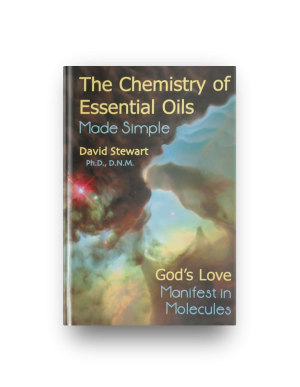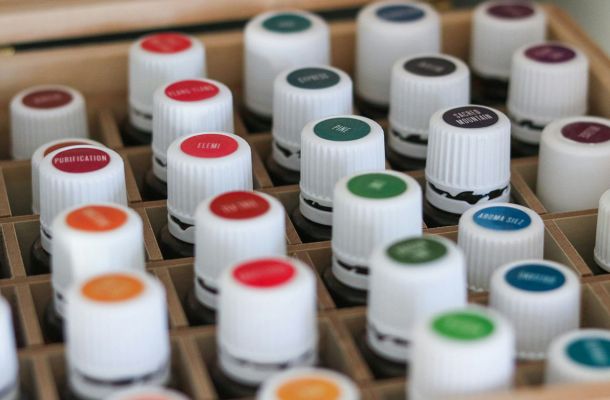Why Doesn’t Young Living Sell Birch Oil? – Volume 9, Number 5
Please feel free to share this newsletter!

Raindrop Messenger
Official Newsletter of CARE
The Center for Aromatherapy Research and Education
12923 BCR 800, Marble Hill, Missouri USA 63764
(573) 238-4846
NOTE: The information in this newsletter is intended for education purposes only. It is not provided in order to diagnose, prescribe, or treat any disease, illness, or injured condition of the body or mind. Anyone suffering from any disease, illness, or injury should consult with a physician or other appropriate licensed health care professional.
Why Doesn’t Young Living Sell Birch Oil?
Originally Posted September – October 2011
1. Why Doesn’t Young Living Sell Birch Oil?
~^~^~^~ by David Stewart, PhD
People ask me why Young Living does not sell Birch Oil when several other companies do. They are wondering if it would be good to purchase and use Birch Oil from a non-Young Living source, since Young Living does not carry it.
Young Living used to carry a good Birch Oil until 7 or 8 years ago when their supplier, which was in Canada, went out of business. Since then YL has not found another reliable and adequate source of pure natural Birch, which is why they don’t carry it. If Young Living cannot find a reliable source of therapeutic grade oil of a given species, rather than sell an inferior grade, they won’t carry that species at all. Such is the integrity of Young Living.
Most of what is sold as “Birch Oil” in the world is actually pure synthetically produced methyl salicylate. Methyl salicylate smells like Birch and/or Wintergreen oil because both of these essential oils are composed of 88-99% natural methyl salicylate. But natural methyl salicylate is not the same as that produced in a chemical laboratory. Natural methyl salicylate as found in natural Birch or Wintergreen oil is not toxic while that synthesized in a laboratory is. While both the natural and synthetic versions of this compound have the same formula (C8H8O3) meaning an arrangement of 8 carbon atoms, 8 hydrogen atoms, and 3 oxygen atoms–a total of 19 atoms. These 19 atoms can be arranged in more than a dozen different structural arrangements.
Isomers of Methyl Salicylate
Consider the 19 atoms necessary to build a methyl salicylate molecule as Legos(R). How many forms can you create with the same set of Legos? Different arrangements (or molecular shapes) for the same chemical formula are called “isomers.” (For more, see “The Chemistry of Essential Oils Made Simple,” available at www.RaindropTraining.com.) When nature produces methyl salicylate in the Birch Tree or in a Wintergreen Bush, it only makes one of the isomers, which is the one that fits our cellular receptor sites and facilitates healing. But what is done in nature cannot be duplicated in a laboratory. Chemical laboratories cannot produce only one isomer. They can only produce a mixture of the various isomers. Most of the isomers of methyl salicylate are toxic and/or have no healing properties.
So when doctors say “synthetic and natural compounds both have the same formula,” they are only telling a partial truth. To be completely honest they need to add that the same formula can have a variety of isomers (or molecular shapes), some of which may be beneficial while most will be undesirable or harmful. Think of it this way: Your bodily cells have receptor sites on their surface of their membranes which act as locks to portals into the cells. These locks are there to make sure that only the molecules God intended will enter or communicate with the cell.
Molecules are keys that will fit the locks of certain receptor sites on certain cells. Only a slight difference between two keys makes a tremendous difference in what doors they will open. Hence, different isomers of the same compound, even though they may have the same atoms (same formula) their different shapes means they will affect different cells differently. One isomer may fit the receptors in your muscles, while another may fit the cells of an organ like the liver or thyroid, while yet another may fit only the thyroid cells and no others. In this way, different isomers usually have very different effects on our bodies even though the molecules are composed of the same set of atoms.
Isomers in Prescription Drugs
In fact, you might be interested to know that the majority of prescription drug compounds are manufactued and exist as pairs of isomers, only one of which has the beneficial properties that drug is meant to provide. The other member of the pair is usually harmful and accounts for most of the “unwanted side effects.” Prescription drugs are like this because it is impossible to manufacture only one isomer and too expensive (or impossible) to separate the two isomers. The extra isomer is never mentioned on the label of the prescrption bottle nor in the description of the drug elsewhere. This deception is legally allowed by the U.S. FDA.
Another thing about labeling a bottle of pure synthetic methyl salicylate as “Birch” or “Wintergreen” is that the natural oils contain other compounds besides. It is well known in aromatherpy that essential oil compounds in a mixture don’t behave like the same compounds isolated. Hence, a potentially harmful compound as one of several other compounds in an essential oil do not behave in harmful ways but, instead manifest healing properties. Aromatherapists call this “quenching.” That is where the potentially harmful properties of a compound are quenched or suppressed when combined in a mixture with other compounds.
For example, Myrrh oil contains xylene, an extremely toxic compound by itself, but harmless and beneficial in the company of the other compounds of Myrrh. Myrrh is one of the safest of all essential oils. Those who claim that Birch or Wintergreen oils are dangerous are referring to tests made on synthetic methyl salicylate isolated and tested alone, usually on animals. If the research was with pure natural oil applied to people, they would find no danger, only benefits. These are some of the fallacies of those who claim dangers for natural Birch or Wintergreen.
Since doctors are not familiar with real Birch Oil, which is harmless and non-toxic, they have published strong warnings about using Birch or Wintergreen oil. This includes a warning in the “Merck Manual” that using either of these oils can be lethal, even if only used in a humidifier or steam diffuser with children. (The “Merck Manual” is the most widely used reference in medicine for clinical practice.) Their strong cautions and warnings regarding Birch (or Wintergreen) oils are actually about synthetic methyl salycilate, not real Birch or Wintergreen. If you are using Birch or Wintergreen from a company other than Young Living, the medical precautions against these oils are justified. But for the oils from Young Living, none of the warnings apply.
I have personally ingested capsules orally containing 20 drops of these oils (Young Living brand) with nothing but benefits and no untoward effects. They have an analgesic effect, like aspirin. Medical authorities in general do not recognize the difference between a synthetic oil and a natural therapeutic grade oil such as those from Young Living.
Can You Buy Real Birch Oil from Another Source?
If you buy another brand of Birch, you can be 99% sure that is it not the real thing, even though the label on the bottle may say that it is “natural and pure.” In the U.S. a bottle may say “natural” if the compounds it contains can also be found in nature, even though it may have been totally produced in a chemical laboratory. The bottle can also say “pure” when there may be no more than 5% of the actual product. These misrepresentations seen on many labels are legal and allowed by the U.S. government.
When a reliable and adequate source of true Birch becomes available, Young Living will, no doubt, carry it again. There is a Birch Farm in Alaska that was established a few years ago which, at some future time, may become a supplier for Young Living. There may be other such farms as well, still in the maturing early-growth stage.
In order to carry Birch oil Young Living needs not only a source that is reliable in quality, but also reliable in quantity, capable of supplying the needs of 200,000 distributors. Even if good Birch Oil would become available from one or more small growers/distillers, it would still not be possible for YL to carry it and meet the needs of so many distributors.
Birch or Wintergreen are fundamental in the performance of Raindrop Technique. When Birch oil was available from Young Living, most Raindrop Facilitators prefered Birch to Wintegreen.
Flavor Grade Birch Oil
Real Birch oil, distilled from the wood, bark, and twigs of the Birch tree (Betula alleghaniensis), is used for flavorings in root beer and pancake syrup, which is more profitable than distilling the tree for therapeutic grade essential oil. For use as a flavoring, the standards are not so high in the gathering, distilling, and producing of the oil. While a therapeutic grade Birch oil may contain 100 or more compounds, a flavor grade may contain less than 5 compounds. So long as the oil contains the compounds that contribute to the flavor it fulfills the taste test even though it may be missing most of the compounds that contribute to healing.
While trace amounts of synthetic Wintergreen or Birch used for flavoring in candies or other foods and products appear to be harmless, there is at least one reported death when synthetic versions of these oils are ingested, absorbed, or applied repeatedly over a period time. See the article entitled “Death by Bengay(R)” in the November-December 2008 issue of “The Raindrop Messenger.” All back issues of “The Raindrop Messenger,” including this one, are archived on the website, www.RaindropTraining.com.
So there is your story on Birch. Personally, I will not be using Birch Oil until Young Living carries it. High quality Wintergreen oil, which young Living has, is equivalent to Birch in its therapeutic properties. Young Living has a good source for pure Wintergreen. Almost all the other companies out there are selling synthetic methyl salycilate as “Birch” or “Wintegreen.” Since the “Merck Manual,” the basic reference for medical practice, warns that these oils (i.e. synthetic methyl salycilate) can be lethal even when used in something as innocuous as a humidifier, I would caution you, or anyone, to avoid anything labeled as “Birch” or “Wintergreen” that is not from Young Living.
~^~^~^~^~^~^~^~^~^~^~^~^~^~^~^~^~^~
2. Do Essential Oils Contain Proteins, Enzymes, Vitamins, or Hormones?
~^~^~^~^ by David Stewart, PhD
You may have heard that Essential Oils contain proteins and/or that they contain hormones, vitamins, or enzymes. You may have even heard such statements at functions sponsored by Young Living, including Young Living Conventions. The short answer to the question in the title of this article is: “No. Essential Oils do not contain any of these molecules.” Having said that, let me explain.
Proteins and Enzymes
First of all, Proteins and Enzymes are very large molecules that cannot pass through the distillation process required to produce an essential oil. The range of molecular weights that can pass through distillation ranges up to 500 amu (“amu” stands for “atomic mass unit.”). Proteins and Enzymes have molecular weights that range well above 10,000 amu. Amylase, an enzyme necessary to digest sugar, has a molecular weight of around 45,000 amu. Most proteins weigh considerably more than that. Besides, the heat of distillation breaks down proteins and enzymes so that they could not survive to be found in an essential oil.
So you won’t find any protein or enzyme molecules in an essential oil, with the exception of oils cold expressed and not distilled. The only expressed oils Young Living sells are the citrus oils, pressed from the rinds of the fruit. These can contain traces of proteins, but the proteins do not participate in healing since they cannot penetrate skin, administer to cellular levels, nor circulate in the tissues of the body as do the smaller molecules of a distilled oil.
Vitamins
As for vitamins, they could theoretically be found in essential oils since the molecular weights of some vitamins (like Vitamin A, C, and E) are less than 500 amu. Other vitamins, like B and D, have larger molecular weights. Vitamin B12, for example, has a molecular weight of 1355 amu while a molecule of Vitamin D weighs 793 amu. In case you were interested, the elements contained in Vitamin B12 are Carbon, Hydrogen, Cobalt, Nitrogen, Oxygen, and Phosphorus and have the formula, C63H88CoN14O14P. So now you know why you need a trace of Cobalt in your diet.
However, even though some vitamins could pass through the distillation process because their weights are less than 500 amu, they are generally not found in essential oils. I have never seen an analysis of any essential oil indicating the presence of a vitamin. So while there could be traces of Vitamin A, C, or E in an essential oil, their presence would not be significant enough to consider that oil to be a source for these vitamins.
Because the citrus oils are cold expressed, they can contain larger molecules, like beta-carotene, whose molecular weight is 544 amu. Our bodies can break a beta-carotene molecule into two equal halves and attach an oxygen atom to form two molecules of Vitamin A with a molecular weight of 288 amu. Beta-carotene is found in carrots, which mothers have traditionally advised their children to eat “because they are good for your eyes.” Since carrots contain beta-carotene, which leads to Vitamin A, which is necessary for eyes to see, mothers are scientifically correct in this assertion. But when it comes to essential oils, the traces of beta-carotene in some citrus oils cannot be considered a significant source as a precursor for Vitamin A.
Hormones
Regarding hormones, their molecular weights all range under 500 amu. Hormone molecules have to be small enough to traverse through the tissues to reach their destinations between organs at cellular levels. For example, Estradiol, Testosterone, and Progesterone are natural hormones we all manufacture in our bodies. Their molecular weights are 272 amu, 288 amu, and 314 amu, respectively. So theoretically you could find compounds that would be classified as hormones in essential oils, but like vitamins, such ocurrences are so rare you never see hormones mentioned in the chemical analyses of essential oils.
The above discussion establishes the non-existence, or virtual non-existence, of Proteins, Enzymes, Vitamins, and Hormones in essential oils. But wait! There is more.
Blueprints and Templates
First of all, the electromagnetic imprint of a protein can be passed into and carried by an essential oil. Chemistry deals only with physical attributes of atoms and molecules, not their electromagnetic fields or frequencies. Hence, a chemical analysis is not a complete description of an essential oil, nor is a chemical formula a complete description of a compound.
When you were conceived, two different cells comprised of proteins (a sperm from the father and an egg from the mother), united to form a single cell which then divides to become an embryo and eventually a complete human being comprised of trillions of cells. Once a person has grown into an infant or an adult, there is no trace of the original proteins of the original cells from mother and father to be found in the body, yet the body faithfully reflects the characteristics of the original cells. While the original proteins have long disappeared, the blueprints they contained are still manifest in the human being that grew from them. The features we inherit from our parents remain with us for life even though the original proteins carrying their genetic codes have long disappeared.
The same is true with essential oils. During their formation in the plant, certain proteins and enzymes of the plant participate in the formation of the oil molecules and their electromagnetic imprints and frequencies are carried into the oil. So in a sense, essential oils do contain proteins and enzymes vibrationally even though, they are not present chemically.
Frequencies and Electromagnetic Fields
We know that essential oils contain a spectrum of frequencies emitted by the vibrations of the various electromagnetic bonds between the atoms of their molecules. These frequencies have been measured and described. According to quantum physics and modern string theory, all creation and all matter consists of vibrations that, on a gross level, appear as the solids, liquids, and gases of our universe tangible to our five senses. Beneath tangible matter and our visible human bodies lies a subtle electromagnetic template or blueprint invisible to the five senses, yet exists as an essential foundation for the physical reality we experience.
So it is true, in this sense, that essential oils contain “proteins and enzymes.” We do know that essential oils enhance enzymatic activity in the body which is why they are added to the enzyme supplements that Young Living sells. We also think that essential oils stimulate the body to produce enzymes. Essential oils stimulate the growth of proteins in our bodies during the repair and regeneration of wounded tissues. In fact, the healing processes stimulated in our bodies through the vehicles of essential oils all involve the creation of proteins and enzymes.
How Oils Enhance Vitamin Activities
Similarly, essential oils enhance vitamin utilization in our bodies, increasing their absorptivity and utility. That is why Young Living has added essential oils to its vitamin supplements. We also think that essential oils can stimulate our bodies to make its own vitamins, which are facilitated by the living flora in our bodies. Most people don’t realize that the living colonies of friendly bacteria that dwell in our bodies, not only help us with the metabolism and digestion of nutrients, but they also participate in the creation of necessary vitamins for our health and wellness. Essential oils nurture these colonies and, thus, enhance our levels of necessary vitamins.
While you won’t find high levels of actual vitamins in essential oils, as mentioned above, taking oils into our bodies helps to create and maintain a healthy vitamin balance.
How Oils Act in a Hormonal way
Regarding hormones, oils do not contain any hormones manufactured or needed by human bodies, but the molecules of essential oils can act like hormones in that they can occupy hormonal receptor sites and, thus, trigger beneficial hormonal actions in support of our endocrine system. Also, as in the case of proteins, enzymes, and vitamins, essential oils can stimulate and support our bodies in producing the actual hormones we need. Since hormones are small molecules that can come through the distillation process, it is possible that essential oils do contain traces of plant hormones which can be beneficial to our well being.
Since the presence of hormones in essential oils would only be in very tiny amounts, not detected by a chemical analysis from a laboratory, the “hormonal” properties of oils would be more in the way of support and enhancement of our endocrine systems, assisting in the manufacture and balance of the hormones our body naturally makes.
So there you have it. Do essential oils contain proteins, enzymes, vitamins or proteins? A full answer would be both, “Yes and No.” And now you know how this can be so.
NOTE: For additional information on how essential oils work see “The Chemistry of Essential Oils Made Simple,” by David Stewart, available at www.RaindropTraining.com and other sources.
THE RAINDROP MESSENGER
Official Newsletter of CARE
The Center for Aromatherapy Research and Education
12923 BCR 800, Marble Hill, Missouri USA 63764
(573) 238-4846
NOTE: The information in this newsletter is intended for education purposes only. It is not provided in order to diagnose, prescribe, or treat any disease, illness, or injured condition of the body or mind. Anyone suffering from any disease, illness, or injury should consult with a physician or other appropriate licensed health care professional.
The Care Calendar
Topics covered in the Raindrop Messenger:
- 10 Reasons to Learn Raindrop
- 3 1/2 Day Intensive
- 3 Day Intensive
- Acid Reflux
- Advanced Bible Oils
- Advanced Chemistry of Essential Oils
- Advanced Emotional Release
- AFNOR
- Allergy Season
- Allopathy
- ALOES/SANDALWOOD
- and Emotional Release
- Annual CCI Summit
- Anointing
- Anointing with Oil & Laying on of Hands
- Applied Vitaflex
- Aroma Life
- Aromatherapist
- Aromatherapy
- Aromatherapy Certification
- Arthritis
- Believer
- BIBLE OILS
- Biblical Oils
- Birch Oil
- Black Widow
- Blue Chamomile
- Blue Spruce
- Body Systems
- cancer
- CARE Chemistry
- CARE Classes
- CARE Instructors
- CARE INTENSIVES
- CARE Seminars
- CARE Summit 2025
- CARE training
- Carvacrol
- CCI Certification
- CCI Summit
- CCI Summit 2024
- CEDARWOOD
- Center for Aromatherapy Research and Education
- Chakras
- Charging for Raindrop
- Chemistry
- Chemistry 1&2
- Chemistry of Essential Oils
- Chemistry of Essential Oils Made Simple
- Chemotypes
- cleanses
- Clover
- Connection
- Continuing Education Credit
- CYPRESS
- Dangers Of Prescription Drugs
- Detoxifiers
- Developing Gratitude
- DI GIZE
- DIAMOND
- Do All You Can
- Earthquakes
- Education
- Elderberry
- ELECTROMAGNETIC FIELD
- EM FIELD
- Emotional Release
- Emotional Release with Oils
- Energize
- ENZYMES
- Essential Oils
- ESSENTIAL OILS FOR INTUITIVE PURPOSES
- Essiac tea
- Exodus Supplement
- Feelings Kit
- Flu
- Focus
- Frankincense
- FREQUENCES
- Full CARE Intensive: Raindrop
- GALBANUM
- Garlic
- Gary Young
- German Chamomile
- Ginger
- Goals
- god's love
- Gold Frankincense Myrrh
- Grand Fir
- Grapefruit
- Growth
- Habits
- Harmonies Melodies & Symphonies with Essential Oils
- Heal Your Body
- Healing
- Healing Oils Of The Bible
- Helichrysum
- HERXING
- History of Anointing Oils
- Holy Anointing Oil
- Holy Incense
- Homeopathy
- Homeostatic Intelligence
- HYSSOP
- IASP
- Institute for Energy Wellness Studies
- Integrated Aromatic Science Practitioner
- Joy
- Juniper
- laughter
- Lavender
- Lee Stewart
- Legal
- lemongrass
- linen
- Liver
- Look Ahead.
- Love
- Lyme Disease
- Mind-Body Connection
- Mint
- Myrrh
- Myrtle Oil
- NAT
- Natural
- Natural Molecules
- Neuro-Auricular Technique
- never give up
- new age
- Ningxia
- Ningxia Red
- Non-Nutritive
- Nova Vita
- Ocotea Oil
- Onycha
- ORAC SCALE
- Oregano
- Oregano oil
- Overcoming Diabetes
- patchouly
- Peruvian Chocolate
- Pest Control
- pheromones
- phosphoric acid
- Photoxicity
- Pine
- POO-ROMATHERAPY
- Practitioner
- Preparation
- Protocel
- Pure Therapeutic Grade Essential Oil
- Quantum Physics
- Raindrop
- Raindrop and Vitaflex Techniques
- Raindrop certification
- Raindrop instructors
- Raindrop Technique
- Raindrop Technique Training
- Raindrop Training
- Raindrop Without a License
- RC Blend
- Relationship
- ringing in the ears
- Rose Essential Oil
- ROSE OF SHARON/CISTUS
- Rose Oil
- Safe Insect Repellants
- scar-b-gone
- Science Of Essential Oils Made Simple
- Sensitivities to Essential Oils
- sick building syndrome
- SPIKENARD
- Stay Positive
- staying healthy
- Success
- Supervisor Training
- Synthetic Compounds
- tansy
- Tea Tree
- The Blood Brain Barrier
- the Ecuador Clinic
- THE FIRST IMPRESSION TECHNIQUE
- the Mind-Body Connection
- THE PRAYER OF JABEZ
- The Quantum Connection
- THE SLEEP TECHNIQUE
- Therapeutic Grade
- Thieves Household Cleaner
- Thieves Oil
- Thyme
- Thyme Oil
- Tinnitus
- Transformation
- Transformation Oil Blend
- Twelve Questions to Ask Those Who Invite You to Join Another Company
- unresolved emotions
- valor blend
- Vita Flex
- Vitaflex
- Vitaflex and Raindrop
- water
- Wealth and Spirituality
- Wintergreen
- Wolfberries
- Ylang Ylang
- YLEO
- Young Living business
- Young Living Essential Oils
- Young Living Oils and Products



